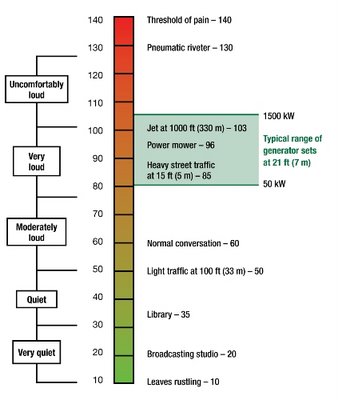
Like many types of rotating machinery, reciprocating engine-powered generator sets produce noise and vibration. Whether these generator sets run continuously as in prime power applications or occasionally in standby applications, their operating sound levels often must be reduced to comply with local, state or federal ordinances. Depending on location and zoning in North America, overall maximum permitted noise levels range from 45 dB(A) to 72 dB(A).
Recently, some states and communities have begun to specify property line noise restrictions using octave band frequencies to reduce the amount of low-frequency noise that reaches community neighborhoods. Since untreated generator set noise levels can approach 100 dB(A) or more, both the location of the generator set and noise mitigation take on great importance.
In general, two forms of regulations affect the level of noise to which individuals or the public may be exposed: state or municipal noise ordinances and OSHA safety regulations. The former address noise that may migrate beyond property lines and disturb the public but that is seldom sufficiently loud to constitute a safety hazard. The latter addresses standards for noise exposure in the workplace to protect the health of workers. OSHA regulations normally only apply to workers who may be exposed to generator set noise that is above 80 dB(A) for any appreciable time. Workers can limit exposure by wearing proper hearing protection when working around high noise areas. Europe and Japan, as well as numerous other countries, also have set standards to control noise in the workplace and in the environment at large.
by Dennis Aaberg
